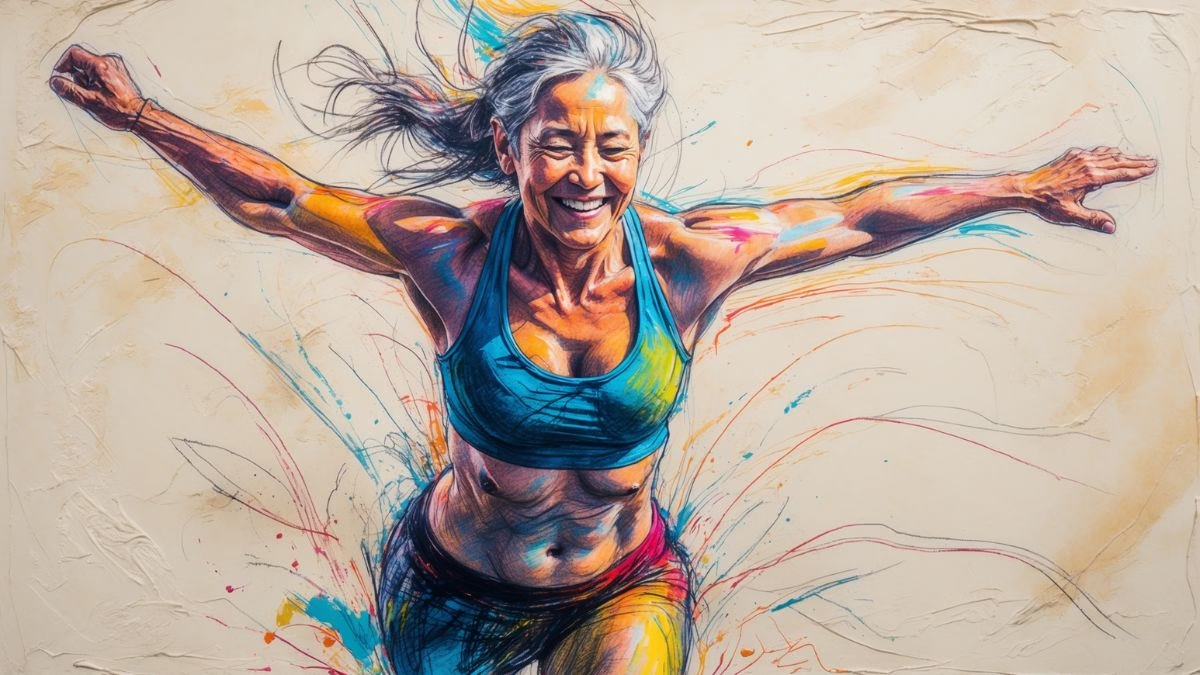Introduction
Have you ever wondered what it truly takes to live a longer, healthier, and more vibrant life? We’re often told to “exercise more,” but what does that really mean? And what’s happening inside our bodies when we do? The dream of extending not just the years in our life, but the life in our years, might be more accessible than you think, and it doesn’t always require grueling hours at the gym.
This quiz is designed as a fun, interactive journey into the science of longevity and physical activity. It’s not a test, but a learning experience meant to pique your curiosity and empower you with knowledge. By exploring these questions, you’ll:
Uncover the “Why”: Discover the fascinating ways exercise can slow down the aging process at a cellular level.
Find Your “How”: Learn about the different types of activity and how much you really need to make a difference.
Bust Common Myths: Separate scientific fact from fitness fiction.
Feel Inspired: Get motivated by understanding the real, tangible benefits that even small amounts of movement can bring to your life.
Ready to explore the secrets to a longer, stronger life? Let’s take the first step together!
Quiz Content Audio
Learning Quiz
This is a learning quiz from English Plus Podcast, in which, you will be able to learn from your mistakes as much as you will learn from the answers you get right because we have added feedback for every single option in the quiz, and to help you choose the right answer if you’re not sure, there are also hints for every single option for every question. So, there’s learning all around this quiz, you can hardly call it quiz anymore! It’s a learning quiz from English Plus Podcast.
The Active Path to a Longer Life
Hello, and welcome. Let’s talk about one of the most exciting topics there is: how to live not just a longer life, but a better, more vibrant one. For centuries, humanity has searched for a fountain of youth in potions and pills, but modern science has confirmed that one of the most powerful tools for longevity is something far more accessible: physical activity. But how does it work? Why is moving your body so profoundly good for you? Let’s take a journey inside ourselves to find out.
Our story begins at the cellular level. Imagine your DNA, the blueprint of your life, is stored in chromosomes. At the very tips of these chromosomes are protective caps called telomeres. You can think of them like the little plastic tips on your shoelaces that prevent them from fraying. Every time a cell divides, these telomeres get a tiny bit shorter. Shorter telomeres are a classic hallmark of aging. Here’s the magic: regular physical activity acts like a cellular maintenance program. It reduces the chronic inflammation and oxidative stress that wear down our telomeres. So, a simple habit like a daily brisk walk is, in a very real sense, helping to protect your DNA and slow the aging process where it starts.
At the same time, exercise overhauls our cellular power plants, the mitochondria. These tiny engines inside our cells are responsible for generating the energy that fuels everything we do. As we age, they can become less efficient and fewer in number. But when you exercise, you create a demand for more energy. Your body responds to this beneficial stress by building new, higher-functioning mitochondria. It’s like upgrading a city’s old power grid. More power plants mean more energy, more vitality, and a body that functions like a younger version of itself.
Now, let’s zoom out from the cells to the systems. Think of your heart. It’s a muscle, and like any muscle, it gets stronger with work. Regular cardio makes your heart more efficient, so it doesn’t have to work as hard when you’re resting. This lowers your resting heart rate and blood pressure, saving you millions of heartbeats over your lifetime and dramatically reducing the strain on your most vital organ.
And what about your brain? We often separate mental and physical health, but they are deeply connected. Physical activity is one of the best things you can do for your brain health. It boosts blood flow, delivering oxygen and nutrients. Crucially, it also stimulates the release of a substance called BDNF, which acts like fertilizer for your brain cells, helping you grow new ones and form stronger connections, especially in areas vital for memory. This is a powerful defense against age-related cognitive decline and dementia.
So, what kind of exercise should we be doing? The good news is that you don’t have to choose just one. Our bodies thrive on variety. Cardiovascular exercise, like walking, swimming, or cycling, is essential for heart health. But we can’t neglect strength training. As we get older, we naturally lose muscle in a process called sarcopenia. Lifting weights, or even just your own body weight, is the single best way to combat this. Maintaining muscle keeps your metabolism high, helps control your blood sugar by making you more sensitive to insulin, and—critically—maintains your strength and balance. This is what allows you to get up from a chair with ease, carry your own groceries, and prevent a devastating fall.
Then there’s flexibility and balance work, like yoga or tai chi. Their role can’t be overstated. By improving your stability and range of motion, they are your best insurance policy against the falls that can rob older adults of their independence.
Now, I know what you might be thinking: “This sounds like a lot of work.” But here is the most empowering news of all. The greatest benefits from exercise come when you go from doing nothing to doing something. You don’t need to run a marathon. The science shows that breaking up your activity into small, 10-minute chunks is incredibly effective. That walk during your lunch break? It counts. Taking the stairs? It counts. Vigorous gardening on a Saturday? That absolutely counts. This is the concept behind NEAT, or Non-Exercise Activity Thermogenesis—all the little movements we do all day that add up. The lifestyles in the world’s “Blue Zones,” where people live the longest, aren’t built on gym memberships; they’re built on lives of constant, natural movement.
Ultimately, the most profound scientific finding is also the simplest. The best activity for longevity is the one you will do consistently. The key is to find joy in movement. If you love to dance, then dance. If you love to hike, then hike. When physical activity becomes a source of pleasure rather than a chore, it becomes a sustainable, lifelong habit. And that habit is the most powerful prescription for a long, healthy, and happy life that science has yet discovered.










0 Comments